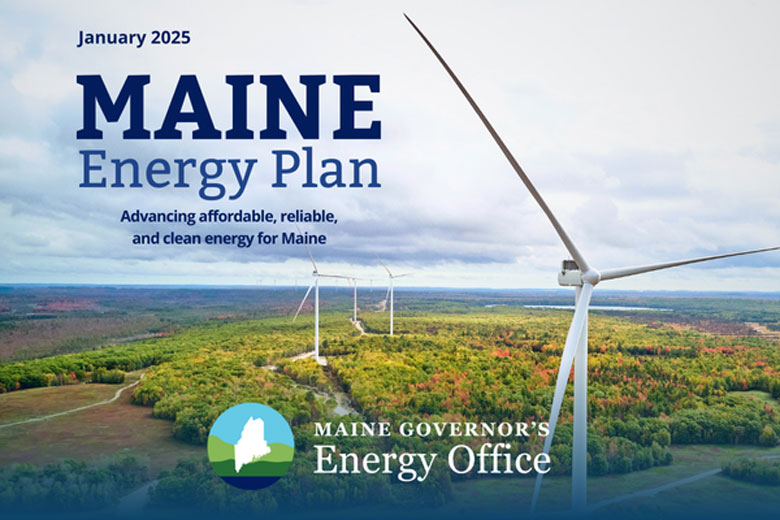One of the biggest energy issues in Maine is cost. Mainers pay some of the highest electricity rates in the country, a burden that lands squarely on families, small businesses, and municipalities.
High costs are driven by factors like aging infrastructure, a growing electrical demand, and an energy mix heavily reliant on natural gas—a fuel prone to sharp price swings.
What might look like a line item on a utility bill translates into real choices: whether a family heats their home fully in the winter, whether a small shop can stay competitive, or whether a town can stretch its budget to cover other needs.
In December 2020, the state launched Maine Won’t Wait, its first climate action plan. It set ambitious targets: 80% renewable electricity by 2030 and 100% by 2050. Just three years later, state leaders doubled down, moving the 100% clean energy goal forward a full decade, to 2040. The message was clear—clean, affordable energy is essential not only for climate goals, but also for economic security and resilience. The results are already visible. By 2024, Maine reported:
• 55% renewable electricity production
• Over 100,000 heat pumps installed in homes and businesses
• More than 15,000 jobs in the clean energy sector.
These numbers tell stories. Heat pumps mean warmer homes and lower bills in the winter. Jobs in solar, wind, and efficiency mean new career paths for Maine workers. And more renewable power means less reliance on volatile fossil fuel markets.
In January 2025, the Governor’s Energy Office released the Maine Energy Plan, a roadmap for the years ahead. Around the same time, the Legislature passed LD 1270, creating the new Department of Energy Resources, a cabinet-level agency to oversee energy policy and coordinate efforts across state government.

This move reflects a recognition that energy is no longer just a utility issue—it is an economic, environmental, and community priority that needs strong leadership. The 2025 Maine Energy Plan lays out five core objectives:
• deliver affordable energy for Maine people and businesses
• ensure systems are reliable and resilient against storms and disruptions
• responsibly advance clean energy like solar, wind, and offshore projects
• deploy efficient technologies to lower costs
• expand clean energy careers and support innovation
Still, the transition is not without challenges. Transmission bottlenecks slow down renewable projects connecting to the grid. Communities wrestle with siting decisions, balancing the need for new projects with protecting heritage landscapes, working waterfronts, and “The way life should be.”
As more households adopt electric vehicles and heat pumps, demand on the grid grows, making investments in modernization and resilience even more urgent.
However, we all know Mainers have never shied away from hard work.
From lobstermen testing hybrid and electric boats, to homeowners insulating drafty farmhouses, to students training for jobs in clean energy, the state’s people are already adapting.
The path forward will require collaboration across all sectors, a role Island Institute continuously plays with complicated community issues. It will require state agencies, municipalities, utilities, and community leaders to invest in resilient infrastructure that is community informed, ensuring that clean energy does not just arrive, but arrives in a way that lowers costs and improves quality of life.
A stronger, cleaner, more affordable energy future for Maine is not a distant vision—it is already taking shape. And if the progress to date is any sign, Mainers are ready to lead the way.
Erin Quetell is public policy director for Island Institute, publisher of The Working Waterfront. She works with communities and partner organizations and leads government relations work and public policy campaigns to advance the resilience of Maine’s island and coastal communities. She may be contacted at equetell@islandinstitute.org.





